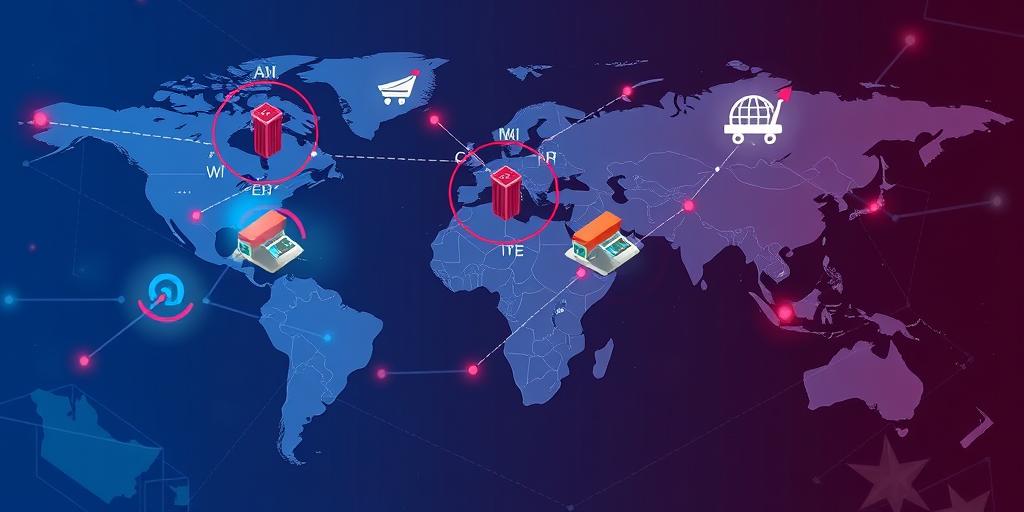Cross-Border E-commerce: India and the World in 2025
Cross-border e-commerce is rapidly reshaping the global marketplace, and India is poised to be a key player. This article examines the projected landscape of cross-border e-commerce involving India by 2025, analyzing key trends, opportunities, and challenges.
Current Scenario
India’s e-commerce sector has experienced significant growth, driven by increasing internet penetration, smartphone adoption, and a rising middle class. However, cross-border e-commerce is still in a nascent stage compared to domestic e-commerce.
Key Trends Shaping Cross-Border E-commerce in India by 2025
- Increased Internet Penetration: With ongoing efforts to expand internet access, particularly in rural areas, a larger segment of the Indian population will participate in online shopping, including cross-border transactions.
- Growing Middle Class: The expanding middle class in India has higher disposable incomes and a greater appetite for international brands and products not readily available domestically.
- Government Initiatives: The Indian government is likely to introduce policies and incentives to promote exports through e-commerce, streamlining customs procedures and reducing compliance burdens.
- Technological Advancements: AI-powered translation services, personalized shopping experiences, and enhanced cybersecurity measures will facilitate smoother cross-border transactions.
- Logistics and Infrastructure Development: Improvements in logistics and infrastructure, including warehousing, transportation networks, and last-mile delivery services, will reduce shipping times and costs.
- Digital Payment Solutions: The proliferation of digital payment solutions like UPI, mobile wallets, and online banking will simplify cross-border payments for consumers and businesses.
Opportunities for Businesses
- Market Expansion: Indian businesses can tap into global markets and access a larger customer base by selling their products and services through cross-border e-commerce platforms.
- Brand Building: Companies can build brand awareness and establish a global presence by showcasing their products to international audiences.
- Diversification of Revenue Streams: Cross-border e-commerce can provide an additional revenue stream for businesses, reducing dependence on the domestic market.
- Access to Niche Markets: Businesses can cater to specific niche markets and customer segments in different countries, offering specialized products and services.
Challenges and How to Address Them
- Logistics and Shipping Costs: High shipping costs and complex logistics can be a barrier to cross-border e-commerce. Businesses can mitigate this by partnering with reliable logistics providers, optimizing packaging, and exploring cost-effective shipping options.
- Customs and Regulatory Compliance: Navigating customs regulations and compliance requirements in different countries can be challenging. Businesses should invest in understanding these regulations and seek expert advice when needed.
- Payment Security and Fraud Prevention: Cross-border transactions are vulnerable to fraud and payment security risks. Implementing robust security measures and using trusted payment gateways can help mitigate these risks.
- Language and Cultural Barriers: Addressing language and cultural differences is crucial for effective communication and customer service. Businesses should provide multilingual support and adapt their marketing strategies to suit local cultures.
India’s Key Export Categories via E-Commerce
- Apparel and Textiles
- Handicrafts and Handloom Products
- Gems and Jewelry
- Leather Products
- Ayurvedic and Herbal Products
The Role of E-Commerce Platforms
E-commerce platforms like Amazon, eBay, and Alibaba play a crucial role in facilitating cross-border trade. These platforms provide businesses with the tools and resources they need to reach global customers, including payment processing, logistics support, and marketing services.
Conclusion
By 2025, cross-border e-commerce is expected to be a significant growth driver for India’s economy. Businesses that embrace this trend and address the associated challenges will be well-positioned to succeed in the global marketplace. With increasing internet penetration, a growing middle class, and government support, India is poised to become a major hub for cross-border e-commerce.
